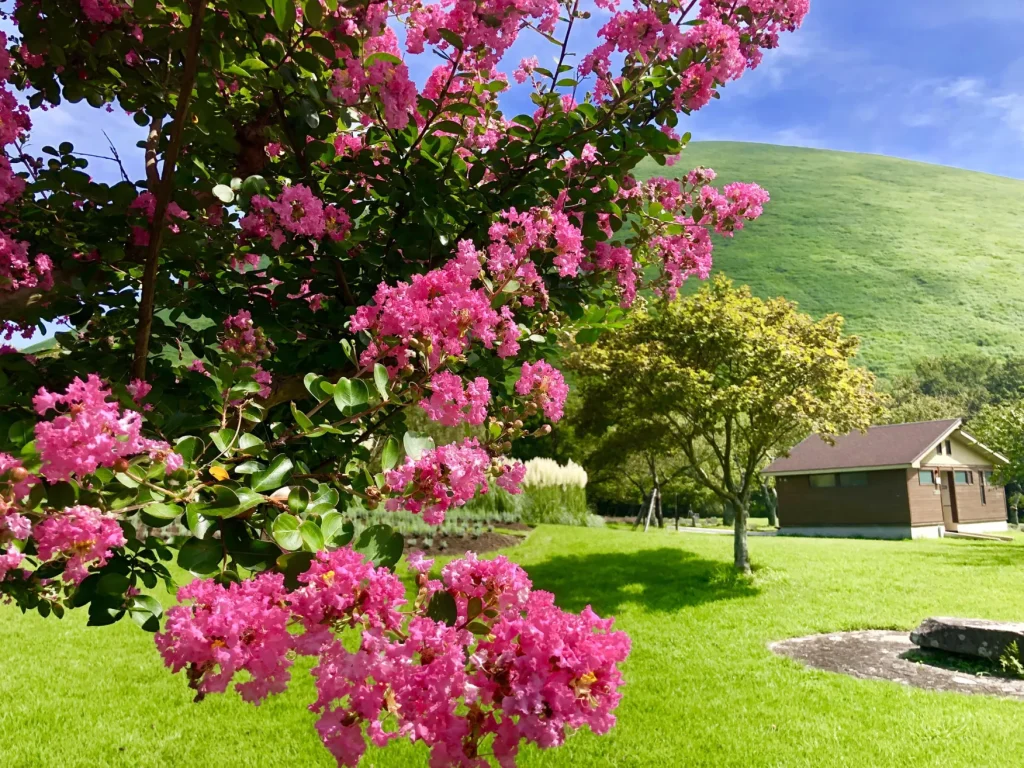
Crape myrtle is written as “百日紅 (A red flower that continues to bloom for a hundred days)” and the reading is “サルスベリ (sarusuberi). “百日紅” is an expression that focuses on the flowering season, and crape myrtle begins to bloom around mid-June and continues to bloom until around October. “サルスベリ”, as the name suggests, is so slippery that even monkeys who are good at climbing can slip on it. It is a word that clearly expresses the characteristics of Japanese word. One word expresses two meanings, with the characters representing the characteristics of the flowers and the pronunciation representing the characteristics of the wood. It’s truly unique. In English, it is called “Crape myrtle”, and it is named because it resembles a flower called myrtle, and the petals are curled like a crepe. In French, it’s called “Lilas d’été”, which means summer lilac. Both are names that focus on the flowers, and the meaning of focusing on the smooth trunk cannot be read. This is another characteristic of the Japanese language, along with the characteristic of the Japanese language that can be taken as flexible.
「百日紅」と書いてサルスベリ。「百日紅」は花期に注目した表現で、サルスベリは6月半ば頃から咲き始め、10月頃まで咲き続けます。サルスベリは言葉通り、木登り上手の猿でさえ滑るほど木肌がツルツルだと言うことから付いた名前です。日本語の特徴を端的に表した言葉です。文字は花の特徴を、読みは木肌の特徴をと、一つの言葉で二通りの意味を表します。実にユニークです。英語では、「Crape myrtle」 といい、ギンバイカ(myrtle)という花に似ていて、花弁がちりめん(crape)のように縮れていることから付いた名前です。フランス語では「Lilas d’été 」といい、夏のリラ(ライラック)の意味です。どちらも、花に注目した名称で、ツルツルの幹に着目した意味は読み取れません。融通無碍とも取れる日本語の特徴とともに、もう一つの日本語の特徴です。
